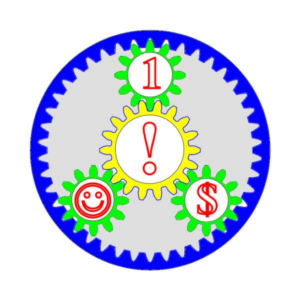Preventative Maintenance and the Service Agreement, Part 2
Preventative Maintenance and the Service Agreement, Part 2
In this Part 2 of the series on Preventative Maintenance and the Service Agreement, guest blogger Ross Atkinson walks us through the benefits and homework necessary before offering preventative maintenance.
As with rentals, the idea is to perform regular maintenance on your customer’s equipment so that they reduce the risk of a major breakdown. The costs of this scheduled maintenance will be cheaper than the breakdown in the long run. Your reputation and your manufacturer’s reputation can avoid taking a beating because you took a proactive approach to offer them a way to avoid that costly, major breakdown.
Before you get too excited and all revved up, you need to do your homework. What services are you going to offer and on which equipment? How much will these agreements cost and how is the customer going to pay for them? Who is going to manage the agreements and schedule the technicians/trucks accordingly? Can all the services be done in the field or will it require the equipment to come into your shop? Do you have the necessary resources to get this off the ground and running? Do you have the software to support this entire effort? I’ve always told people, “95% of service agreements is in the planning”.
So, how exactly does a customer pay for the service agreement? There are a number of ways you can go about doing it. The services can be offered as a set fee, whether that is billed up front or on a predefined schedule. It could also be included with the sale of the equipment. There is always the option for the customer to pay per repair order as the work is performed. With this in mind, you could simply use the scheduling system as a marketing tool to enhance your service department workload by drumming up business and increasing your repairs orders.
You should also think about the possibility of servicing your customer’s other off-brand equipment. You’re making the trip to the customer’s site, so why not take advantage of the travel time. Why can’t you be the Jiffy Lube of the equipment industry in your area? Anyone can do an oil change, even the customer. So why not perform at least the simple oil changes for the rest of the equipment your customer owns? Even if you can’t get the repair business, you can offer to supply the parts required to do it themselves. There’s an opportunity waiting, you just need to make a point of going after it. Remember, your service technicians are trained professionals; you adhere to OSHA standards and the environmental requirements of performing work in the field.
When setting up a schedule of intervals, there are a number of considerations. In the heavy equipment market space, common manufacturer service intervals include a 250, 500, 750 and 1000 hour service. However, intervals can be set up for as long as you like. You need to analyze what services need to be performed and when. In some cases, the service interval step may simply be a visual check of a component, not requiring a lot of time or even a repair order; just a notation that it was checked for historical purposes.
When your technician performs the maintenance, take advantage of the time with the equipment and do an inspection (a topic for another blog). This is an easy way to make the customer aware of any suggested repairs which can be done the next time a scheduled service is performed. What an excellent opportunity to increase your service revenues and show the customer you care about their equipment. Think outside the box…. maybe even offer a small commission to your technician for any revenue generating work that comes out of their inspection.
Some final words of advice…
Once you set up contracts, the system should be smart enough to project the date when the next service is to be performed. This allows you to plan your workload accordingly. You can also then ensure that parts inventory levels are sufficient to perform the maintenance and that the service truck is stocked accordingly.
If the customer trades in the equipment, take advantage of any outstanding, pre-paid intervals as a way to upsell the used equipment on your lot. What a great incentive for someone to purchase it knowing that some services are already included!
The service agreement concept can work for all types of equipment, depending on your business. You could even apply it to other assets you own like service trucks and company vehicles.
Lastly, although the service agreement process may seem to be a daunting task, don’t forget that you can always start small and grow over time. There’s no need to offer everyone everything right out of the gates!








